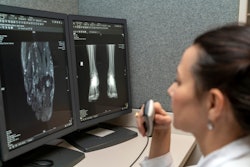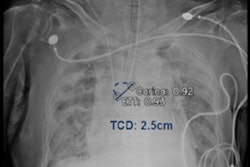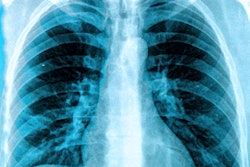Ordering x-rays after removing chest tubes from lung surgery patients does not lead to meaningful change in patient management and prolongs hospital stays, according to a study published July 26 in the Journal of Thoracic and Cardiovascular Surgery.
Thoracic surgeons at the University of Toronto in Ontario, Canada, assessed outcomes after implementing a quality improvement initiative in which they ditched x-rays in these patients in favor of clinical observation alone.
“There was no significant difference in the incidence of adverse events or postoperative complications between patients who underwent [chest x-rays] and those who did not,” noted lead author Andreea Matei, MD, and colleagues.
Routine chest x-rays are performed frequently during the postoperative care of thoracic surgery patients to guide management of the chest tube, but their value for this purpose has been questioned in several patient populations, including cardiac surgery, pediatric, and trauma patients, the authors explained.
To explore the question for thoracic surgery patients, in March 2022 the group implemented the following quality improvement initiative: Instead of ordering x-rays, clinicians examined patients at minimum when the chest tubes were removed and at the end of a two-hour observation period. Elective thoracic surgery procedures included lobectomy, segmentectomy, or wedge resection.
 A graphical abstract of the study. Image courtesy of JTCVS Open.
A graphical abstract of the study. Image courtesy of JTCVS Open.
The researchers monitored symptoms such as shortness of breath, chest pain, subcutaneous emphysema, change in vital signs (heart rate, blood pressure, oxygen saturation), as well as any new patient-reported symptoms. Patients who remained asymptomatic with no change in vital status or other clinical findings two hours after chest tube removal had no further interventions and were discharged. All patients who had any symptoms underwent a chest x-ray.
Over a 13-month study period, out of 248 patients, 63 had chest x-rays after chest tube removal, with the majority (n = 43, 68%) ordered routinely and 15 (24%) ordered for symptoms or changes in vital signs.
Of all chest x-rays performed, 44 (70%) showed no significant radiological change and 19 showed minor radiographic changes. Of the 15 symptomatic patients after chest tube removal, 10 (66%) had no significant radiographic changes and the other five (33%) had minor changes. No patient underwent any procedure following the post-chest tube removal x-ray.
When the authors compared the length of stay (LOS) in hospital between asymptomatic patients who had chest x-rays and those who did not have chest x-rays, LOS was significantly longer among the x-ray group (median 2.9 days vs. 2.3 days; p < 0.05), the group found.
In addition, based on an average of 300 lung resections per year at their center, the authors estimated that eliminating the post-pull chest x-ray would result in a savings of about $18,000, not considering other costs associated with hospitalization and prolonged inpatient stay.
The study offers insight into the ongoing debate regarding the necessity of routine post-chest tube removal chest x-rays in thoracic surgery patients, the team wrote.
“[The research] advocates for a shift towards clinically driven postoperative care, potentially leading to more efficient and patient-centered healthcare delivery,” the group concluded.
The full study is available here.



















